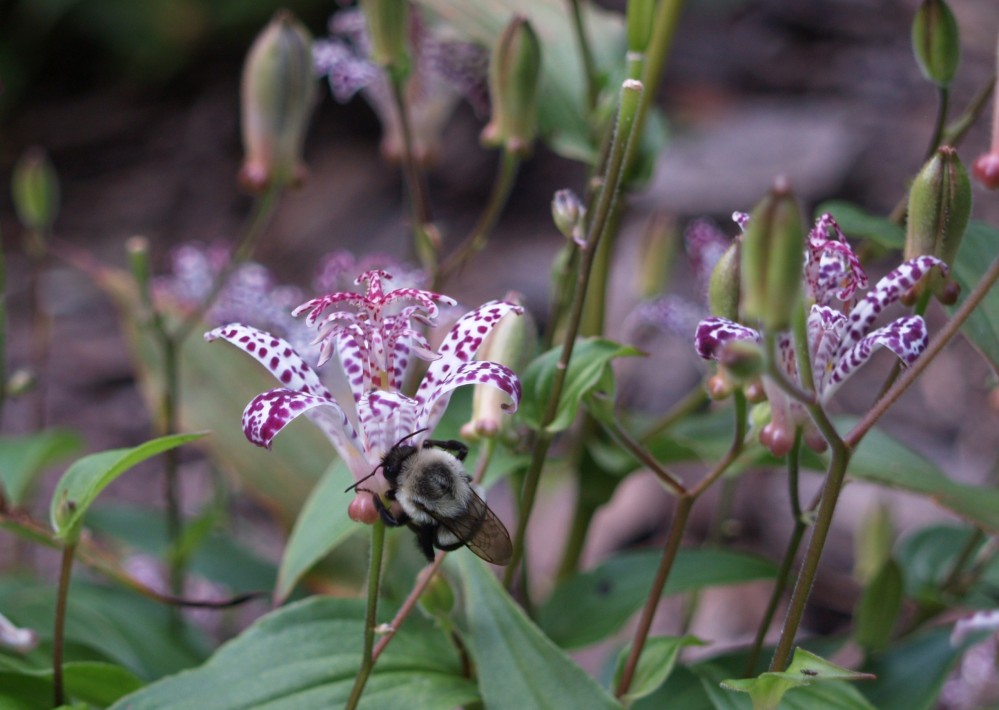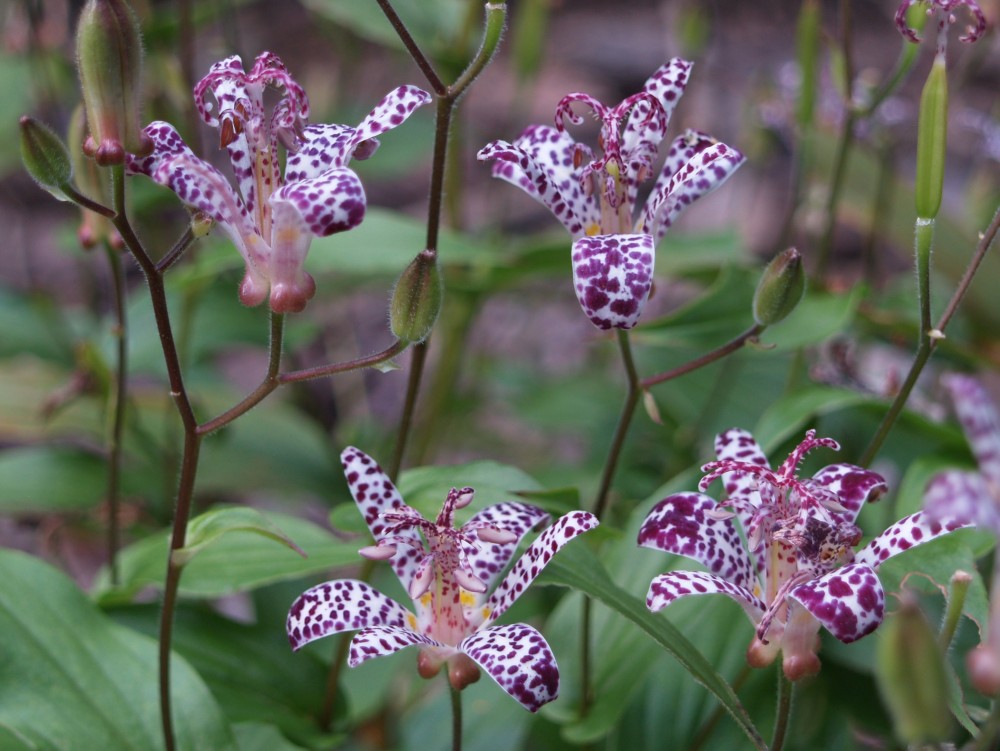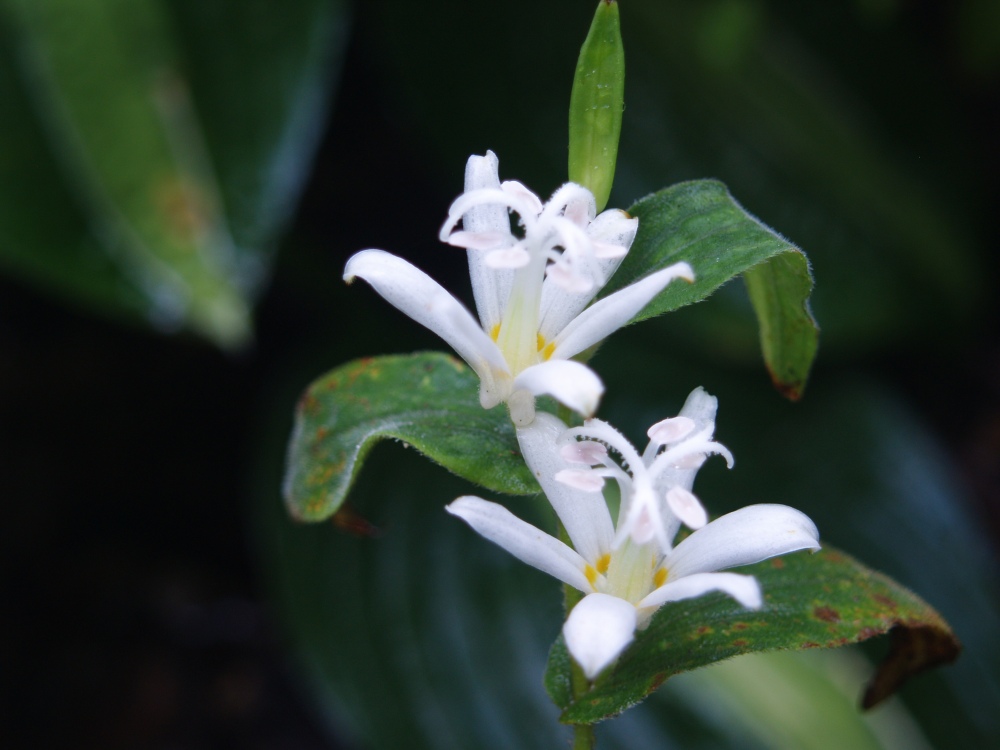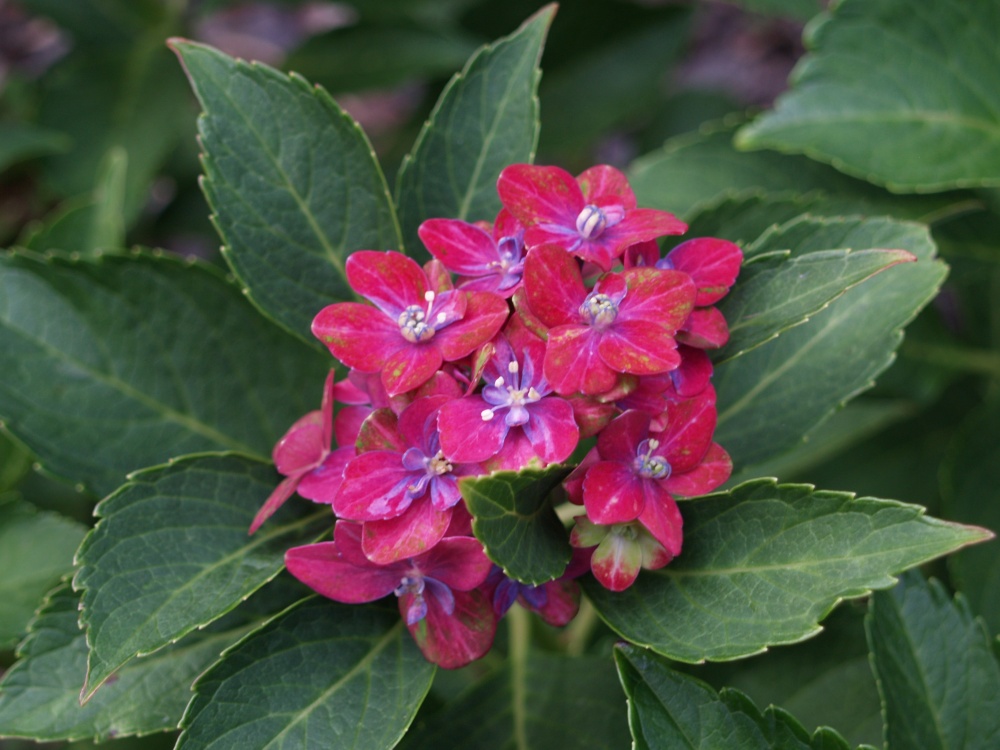 The flowers of several cultivars of toad lilies (Tricyrtis) are too narrow for bumblebees to fit to sample the nectar that is protected beneath pollen laden anthers. So, the bee simply chews a hole near the base of the flower (above), and takes its fill. The bee’s shortcut undermines the toad lily’s natural mechanism designed to ensure pollination, but I suppose smaller pollinators take care of this.
The flowers of several cultivars of toad lilies (Tricyrtis) are too narrow for bumblebees to fit to sample the nectar that is protected beneath pollen laden anthers. So, the bee simply chews a hole near the base of the flower (above), and takes its fill. The bee’s shortcut undermines the toad lily’s natural mechanism designed to ensure pollination, but I suppose smaller pollinators take care of this. 
Several cultivars of toad lily are flowering in the garden at the start of September, with others scheduled to bloom later in the month. Ones planted in more shade will be delayed a few weeks longer than those in sunnier spots. In areas that have become more shaded so that there is no direct sunlight through the day, there will be few or no blooms, and these must be transplanted with cooler temperatures in late summer. 
Toad lilies are fascinating flowers for the late summer garden, with flowers on several cultivars persisting until frost. I continue to add to my collection, and today I’m expecting delivery of a few new ones from a mail order outfit that specializes in less common plants. I will be trying a few yellow and white flowered toad lilies (below), again, and unfortunately the last group of these more unusual varieties were planted where shade was too deep and too dry, and I paid too little attention for them to survive the dryness of summer. Otherwise, these are as care free as any plant in the garden, and with remarkable blooms there is no reason not to plant at least several of the ones most readily available. Then, once you are hooked, you can order ones that are more difficult and costly. If I can manage to keep these alive, which should not be too great a challenge, the slight investment will be very much worthwhile. 
Unfortunately, this is perhaps the last hurrah for the Franklin tree (Franklinia alatamaha, below). For years, the slight spring that originates beneath the garden shed (beside which the Franklinia is planted) ran only through the spring and in wet weather, but now the surrounding soil has remained almost constantly damp for several years. Despite the Franklin tree being native to the banks of the Altamaha River in Georgia, it will not tolerate persistent wet soil, so each year the tree has fewer leaves and more dead branches as it declines .
For lack of a suitable replacement for the long suffering Franklinia, I’ve planted two shrubby Gordlinias (x Gordlinia grandlifora, below), an intergeneric hybrid of Franklinia and the southeastern native Loblolly Bay (Gordonia lasianthus). Today, both Franklin tree and Gordlinia are flowering, I suspect for the last time together. The foliage and blooms of tree and shrub are similar, though the flowers of Gordlinia are somewhat larger. This upright growing shrub rebounded vigorously from winter damage that defoliated the evergreen, and in drier ground I expect that it will be sturdier and longer lived than the Franklin tree. 
There has been no shortage of blooms in the garden through the summer, but with cooler temperatures there will be many more flowers through September. The long delayed blooms of the mophead hydrangeas (Hydrangea macrophylla) are coming on quickly, and only recently I’ve seen the first small flowers from the unusually colored ‘Pistachio’ (below). With the hydrangeas’ recovery from the winter nearly complete, the late summer garden should be delightful.
Oh, I like the look of the Pistachio hydrangea. I may have to find space to try one of those!
There is no space for even one more blue flowered hydrangea in this garden. How many variations on the same flower are needed? There are dozens of blue flowered mopheads on the market today, but only a few hydrangeas that are as unique as Pistachio.